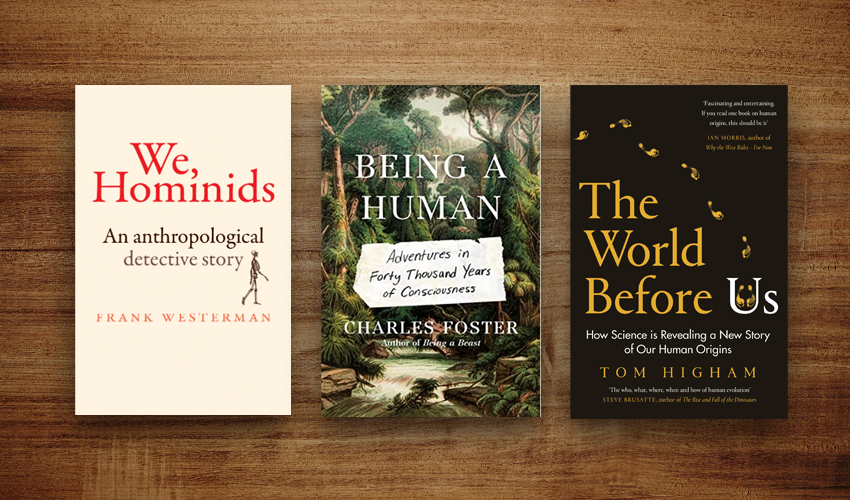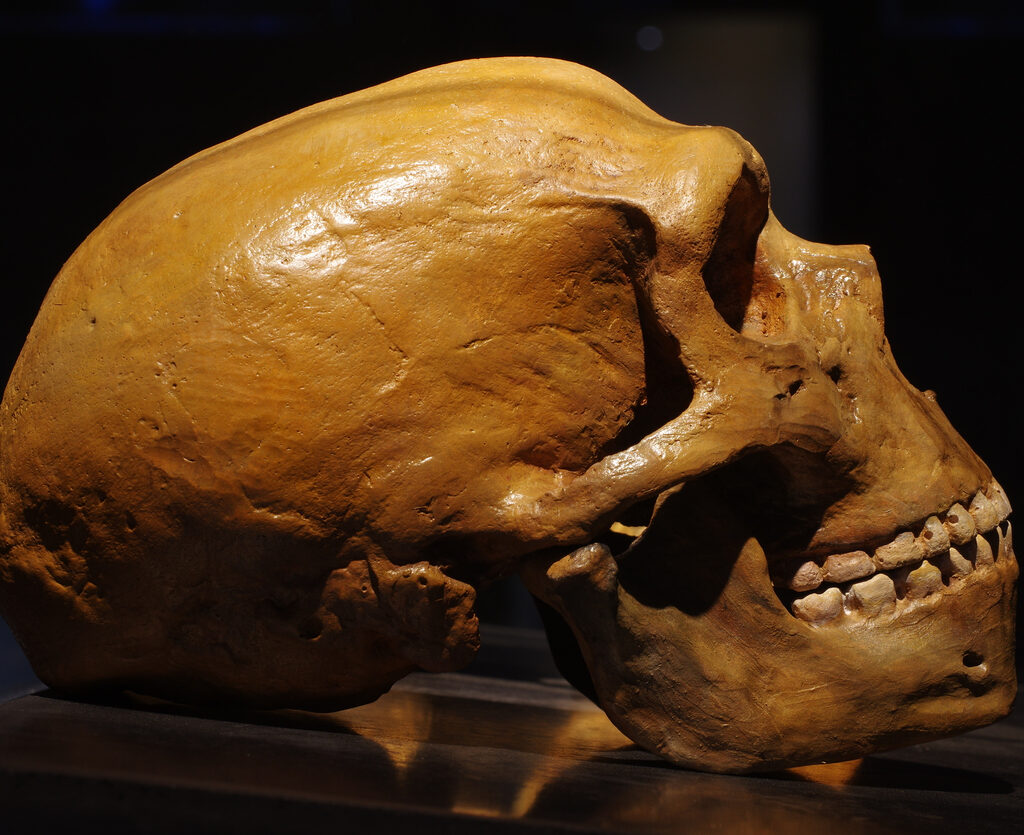Reviews : The World Before Us – Tom Higham
Being a Human – Charles Foster
We, Hominids – Frank Westerman
There has been a lot of interest lately in the origins of humanity, partly driven by a spike in new discoveries in the last decade, but perhaps also due to concerns over meaning and belonging in the increasingly secular West. In 2020 we had books on ancient humans from Kermit Pattison, Ramona Koval and Madelaine Bohme. Now, recently, there are books from Tom Higham, Charles Foster and Frank Westerman. Even for those of us who call ourselves religious, we want to know, as Charles Foster writes, ‘what sort of creature I am’.
In decades past paleontologists were on the lookout for ‘missing links’ but we now know that the tree of modern humans has a number of branches. Neanderthals were the first to be understood as living at the same time as homo sapiens rather than direct ancestors. And DNA testing has shown that Neanderthals interbred with humans, meaning that while it is somewhat true that modern humans drove Neanderthals to extinction, it is also true that Neanderthals live on somewhat in us.
In 2010 in a cave in Siberia, another species was discovered – the Denisovans (named after the cave in which they were found), who lived approximately 200,000 to 30,000 years ago, sharing space with modern humans. As with Neanderthals, traces of Denisovan DNA turns up in humans, most prevalently in Pacific peoples.

In 2017 DNA analysis revealed that a 60,000-year-old Denisovan had Denisovan and Neanderthal parents. So while, generally speaking, Neanderthals occupied the West (Europe) while Denisovans roamed the East (Asia), with humans spreading into both from a central position, modern forensics allows a glimpse into a world of migrations and interactions more complex than previously thought.
The Denisovans are the topic of Tom Higham’s book, a straight-forward narrative in which he explains how modern technologies – 3D imaging, DNA analysis, studies of fossil teeth – give us clues about diet and age, as well as cultural practices that until recently were thought irrecoverable.
Charles Foster’s book is something else again, an attempt to understand the culture of paleolithic people by trying out the lifestyle in the English countryside. Foster, a legal expert and prolific author, is self-deprecating, lyrical, and a bundle of energy. He and his son camp out in an improvised shelter, try to kill hares, eat berries, go trekking, over the course of weeks (while, one assumes, his long-suffering wife looks after the rest of their tribe of children). They get dirty and smelly and hungry, all in order to recreate the conditions that our bodies are suited to – less sedentary, varied diet, lean times, brains attuned to the surroundings and seasons, in close contact with other humans and the earth.
This is a springboard for discussions of consciousness, endurance, the senses, death, belonging, religion, the importance of story and symbol for understanding. While he seems initially irreverent where religion is concerned, the book becomes an impassioned defence of the spiritual, even the supernatural, and a caution against the narrowness of modern materialism, all the more remarkable for his attempts to get into the minds and bodies of our prehistorical ancestors, lack of clean clothes and shaver and all. Aside from our technical prowess – Frank Westerman notes, against those who want to emphasise our similarities to other animals, that chimpanzees don’t drive cars – Foster thinks that fundamental to being human is the complexity of our relationships and our belief that we will endure.
Tom Higham says that 50,000 years ago there were at least five human species living simultaneously. Dutch author Frank Westerman is interested in another branch of this tree – homo floresiensis, discovered in 2003 and popularly known as the ‘hobbit’ of south-east Asia due to the species’ diminutive size. In his entertaining and peripatetic book, Westerman writes about various archaeologists who prompted reassessment of the history of humans.
These included a Father Verhoeven, a priest and archaeologist, who in the 50s and 60s discovered stone tools and fossils in the cave where the hobbit was found, thereby almost discovering homo floresiensis itself. Westerman possibly doesn’t get all the facts straight about Verhoeven, and there’s always a danger in these narratives of accepting, as Westerman seems to, that archaeology simply undermines faith. But it is true that the history of ancient humans was a challenge for church authorities, and Westerman writes about how scientific discoveries can be compromised by the wider complications of culture, nationalism and war.
There is generosity in the way Westerman involves his university students in his quest, the role they play in his narrative, and the way he accepts that their various and sometimes contradictory viewpoints build a richer picture of how we relate to our distant ancestors. He is not without humour, noting, amused, that a Papua New Guinea tribe of pygmies that lived near Mt Goliath were named the ‘Goliath pygmies’.
This fact comes up because he thinks about how humans define ourselves against others. The point with the pygmies is that the whole population is ‘small’ compared to other humans, but, unlike dwarfism, smallness is merely the norm in pygmies, and by default, outsiders are outsized. He asks his students what differentiates us as humans generally.
When we compare ourselves to other species, what is different, what is the same, and do we assume that modern humans are the norm against which everything else must be measured?
Nick Mattiske blogs on books at coburgreviewofbooks.wordpress.com and is the illustrator of Thoughts That Feel So Big.














